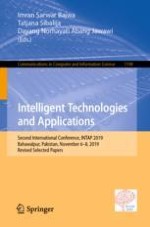2020 | OriginalPaper | Buchkapitel
Image Quality Assessment Using a Combination of Hand-Crafted and Deep Features
verfasst von : Nisar Ahmed, Hafiz Muhammad Shahzad Asif, Hassan Khalid
Erschienen in: Intelligent Technologies and Applications
Verlag: Springer Singapore
Aktivieren Sie unsere intelligente Suche, um passende Fachinhalte oder Patente zu finden.
Wählen Sie Textabschnitte aus um mit Künstlicher Intelligenz passenden Patente zu finden. powered by
Markieren Sie Textabschnitte, um KI-gestützt weitere passende Inhalte zu finden. powered by
